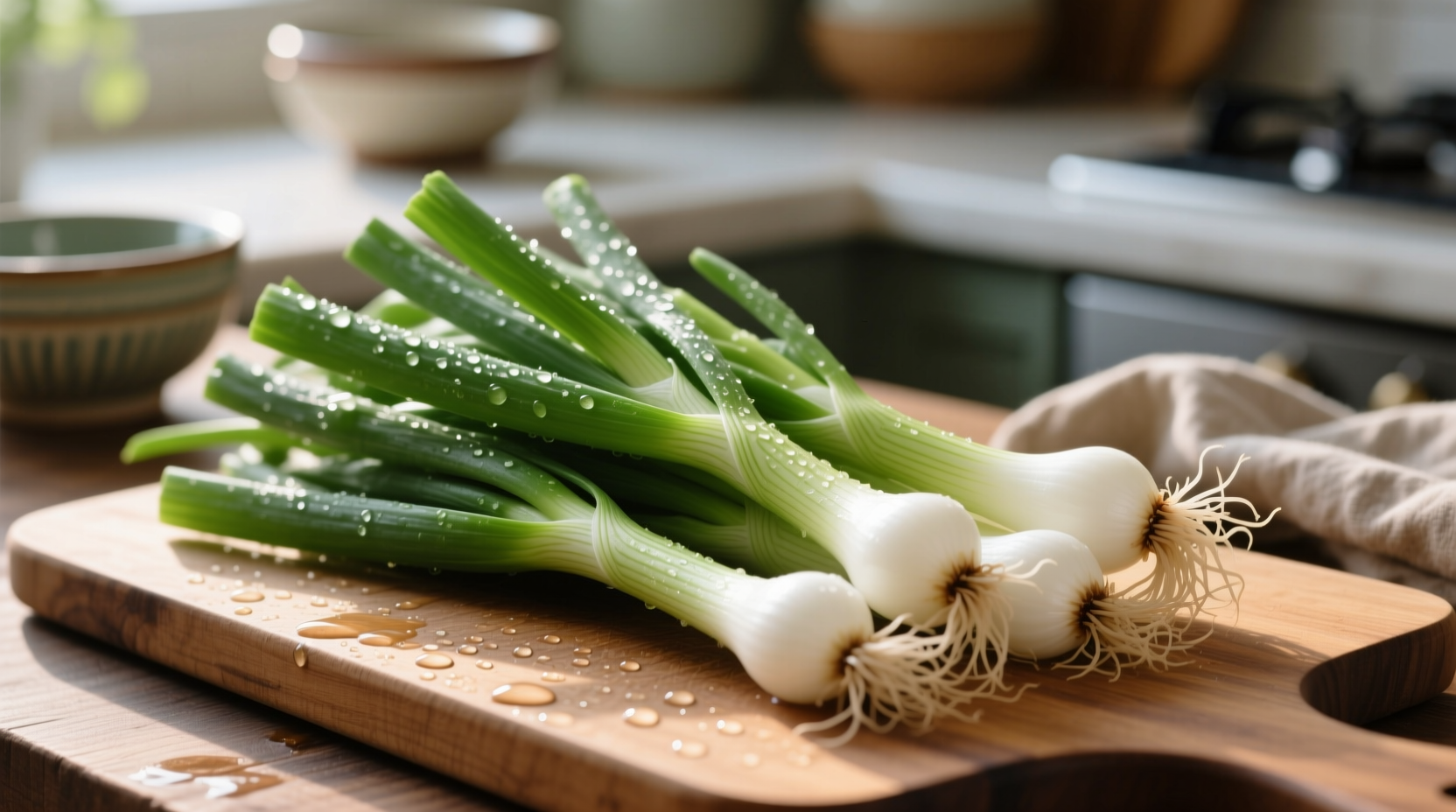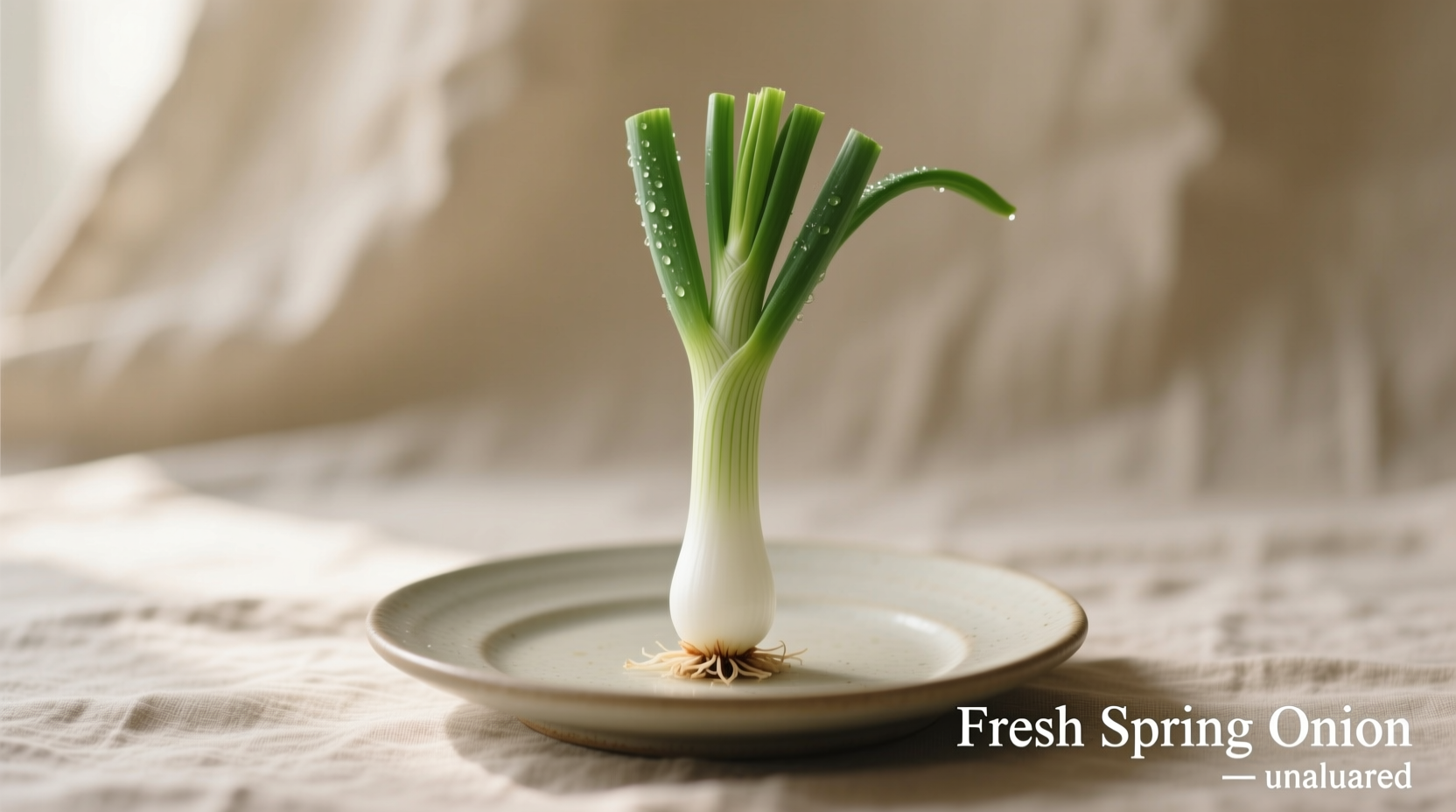When you reach for spring onions at the grocery store, you're grabbing one of cooking's most versatile alliums. Unlike mature onions that develop large bulbs, spring onions are harvested early in their growth cycle, resulting in their distinctive long green stalks and small, tender white bulbs. This harvesting method gives them a milder flavor profile that works beautifully across culinary applications from raw garnishes to cooked components.
What Exactly Are Spring Onions?
Spring onions (Allium fistulosum) belong to the same family as regular onions but represent an earlier harvest stage. They maintain their green stalks while developing only a small bulb at the base. This harvesting technique creates a vegetable with balanced flavor—more intense than chives but significantly milder than mature yellow or red onions.
| Onion Type | Flavor Profile | Best Culinary Uses | Storage Duration |
|---|---|---|---|
| Spring Onions | Mild, fresh, slightly sweet | Raw garnishes, stir-fries, salads, soups | 7-10 days refrigerated |
| Green Onions | Very mild, grassy | Garnishes, raw applications | 5-7 days refrigerated |
| Yellow Onions | Strong, pungent when raw; sweet when cooked | Sautéing, roasting, caramelizing | 1-2 months stored properly |
| Red Onions | Sharp, slightly sweet | Salads, pickling, grilling | 2-3 weeks refrigerated |
This comparison shows why spring onions occupy a unique position in the allium family. According to the USDA National Nutrient Database, spring onions contain significant amounts of vitamin K (207% of daily value per 100g), vitamin C (29% DV), and folate (15% DV), making them nutritionally superior to mature onions in several key areas.
Selecting and Storing Spring Onions Properly
When choosing spring onions, look for crisp, vibrant green stalks with firm white bases. Avoid any with yellowing leaves, slimy spots, or wilted appearance. The best specimens will have a slight sheen and feel substantial in your hand.
Proper storage extends freshness significantly. The University of California Cooperative Extension recommends wrapping spring onions in a slightly damp paper towel and placing them in a perforated plastic bag in your refrigerator's crisper drawer. This method maintains optimal humidity levels while allowing for necessary air circulation. Stored this way, spring onions typically remain fresh for 7-10 days—significantly longer than if left loose in your produce drawer.
Culinary Applications: Maximizing Flavor Impact
Spring onions shine in both raw and cooked applications. Their dual-texture nature means you can utilize different parts for varying effects:
- White bulb portion: Best for cooking first in dishes as it requires slightly more time to soften
- Green stalk portion: Ideal for finishing dishes or using raw where you want visual appeal and milder flavor
Professional chefs like those at the Culinary Institute of America recommend slicing spring onions at a 45-degree angle to maximize surface area and flavor release. For stir-fries, add the white parts first, letting them cook for 1-2 minutes before adding the green portions. This technique ensures both parts reach perfect tenderness without overcooking.

Nutritional Benefits Worth Noting
Beyond their culinary versatility, spring onions deliver impressive health benefits. Research published in the Journal of Agricultural and Food Chemistry confirms that spring onions contain organosulfur compounds that support cardiovascular health and may help regulate blood sugar levels. Unlike mature onions where these compounds concentrate in the outer layers (often discarded), spring onions retain these beneficial compounds throughout the entire plant.
With only 32 calories per 100 grams, spring onions provide substantial nutritional value without caloric burden. Their high vitamin K content supports bone health and proper blood clotting, while the vitamin C boosts immune function and enhances iron absorption from plant-based foods.
Smart Substitutions When Spring Onions Aren't Available
Ran out of spring onions? Consider these alternatives based on your recipe needs:
- For raw applications: Use equal parts green onions plus a pinch of chives for similar appearance and mild flavor
- For cooked dishes: Combine ½ small yellow onion with 2 tablespoons chopped chives to approximate the flavor profile
- For garnishing: Leeks (white and light green parts only) sliced very thin provide similar visual appeal with slightly different flavor
Remember that substitutions won't perfectly replicate spring onions' unique balance, but these alternatives maintain dish integrity when spring onions aren't available.
Three Simple Ways to Elevate Everyday Dishes
Transform ordinary meals with these professional chef techniques:
- Quick-pickled spring onions: Thinly slice and soak in equal parts vinegar and water with 1 teaspoon sugar for 30 minutes. Perfect for tacos, sandwiches, or grain bowls.
- Compound butter boost: Blend finely chopped spring onions with softened butter, lemon zest, and a pinch of salt. Roll into a log, chill, and slice onto grilled meats or vegetables.
- Flavor foundation: Sauté chopped spring onions (white parts first) with garlic as the base for soups, stews, and sauces—this creates a more delicate foundation than standard mirepoix.











 浙公网安备
33010002000092号
浙公网安备
33010002000092号 浙B2-20120091-4
浙B2-20120091-4